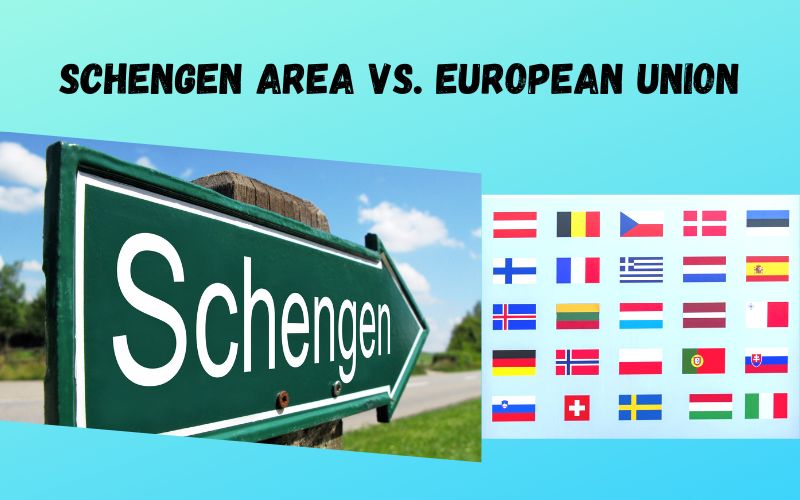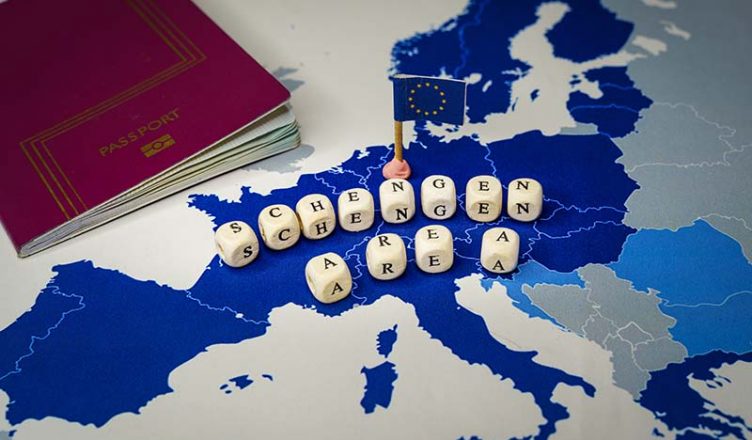Europe is an amazing continent that has a rich and fascinating history. With around 44 countries, Europe is one of the most popular tourist destinations in the world. A Europe tour is on the travel bucket list of most people. But there is a lot of confusion among people about the European Union and Schengen Area, especially among those who want to apply for a Germany visa, an Italy visa, a France visa, etc. to travel to these countries. For many, it is the same, while those in the know are aware that they are two different entities but the majority of them do not know the exact differences. Here, we will provide you with a clear picture that will remove any doubts you may have about the European Union vs. the Schengen Area.
What is the European Union?
The European Union (EU) was formed in 1951 after World War II to ensure that the European countries did not go to war again. The first countries to join the union, which was called the European Economic Community, included Germany, Italy, Belgium, France, the Netherlands, and Luxembourg. It acted as an economic treaty that opened up trade agreements among the member countries.
Today, the European Union consists of 27 European countries that share the same rules, laws, and policies on trade, regional development, and agriculture, as well as in other areas like environment, climate, justice, and health. These countries also have similar beliefs on values like democracy, dignity, human rights, and freedom.
Citizens of the European Union are free to travel throughout the zone. In other words, they have the freedom to live, work, study, and retire in any of the countries belonging to the EU. The countries that are a part of the European Union are as follows:
| Austria | Belgium | Bulgaria |
| Croatia | Cyprus | Czech Republic |
| Denmark | Estonia | Finland |
| France | Germany | Greece |
| Hungary | Ireland | Italy |
| Latvia | Lithuania | Luxembourg |
| Malta | Netherlands | Poland |
| Portugal | Romania | Slovakia |
| Slovenia | Spain | Sweden |
The United Kingdom was also a part of the European Union until recently. On the other hand, there are countries that are considered to be potential members of the European Union, a few of which include Albania, Bosnia and Herzegovina, Kosovo, Montenegro, Serbia, North Macedonia, and Turkey.
What is the Schengen Area?
The Schengen Area is a group of European countries that have signed the Schengen Agreement. It is the largest free-movement zone in the world. Established in 1985, the Schengen Agreement removes border control and security checks for member countries traveling within the zone. It also offers a common visa scheme for foreigners. In other words, a tourist with a Schengen visa can visit all the countries that are a part of the Schengen Agreement without applying for a separate visa for each country he or she wants to visit. For instance, if you apply for a Germany tourist visa, you will receive a Schengen visa that will allow you to enter other Schengen countries.
As per the Schengen Agreement, every country included in the Schengen area has the right to issue a Schengen visa. Although the rules and requirements for Schengen visa applications are the same for every country, each of them has the right to reject a visa application. Every country also has the right to close its borders in case of national emergencies.
Currently, there are 26 European countries that belong to the Schengen Zone, which are as follows:
| Austria | Belgium | Czech Republic |
| Denmark | Estonia | Finland |
| France | Germany | Greece |
| Hungary | Ireland | Italy |
| Latvia | Liechtenstein | Lithuania |
| Malta | Netherlands | Luxembourg |
| Norway | Poland | Portugal |
| Slovakia | Slovenia | Spain |
| Sweden | Switzerland |
Croatia is all set to join the Schengen Agreement on January 1,’ 2023.
Schengen Area vs. the EU or European Union

The main difference between the Schengen Area and the European Union is that the former is a travel zone, while the latter is a political and economic agreement. It is important to know that not all countries that belong to the European Union are part of the Schengen Agreement, and vice versa. Some countries belonging to the European Union opted out of the Schengen Agreement, including Ireland. Apart from this, Bulgaria, Romania, and the Republic of Cyprus are also not part of the Schengen area. Likewise, countries like Norway, Iceland, Liechtenstein, and Switzerland are Schengen countries that are not part of the European Union.
Apart from the 26 countries mentioned above, three microstates in Europe, including San Marino, Monaco, and Vatican City, can also be visited with the Schengen visa, although they have not signed the Schengen Agreement. While Croatia is soon to join the Schengen Agreement, countries like Romania, Cyprus, and Bulgaria are on the waiting list. Travelers should remember that a Schengen visa does not give them the right to visit the European countries that are a part of the European Union but not the Schengen Agreement.
Conclusion
While the European Union and Schengen Agreement are two different entities, both are crucial parts of Europe’s leadership. Knowing the distinction between the two will help you when applying for a visa to any European countries, including Italy, Germany, UK, France, etc.
